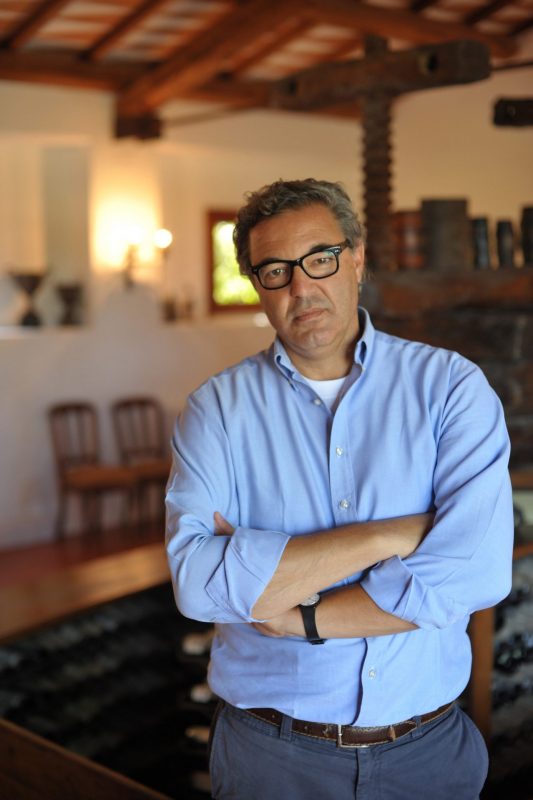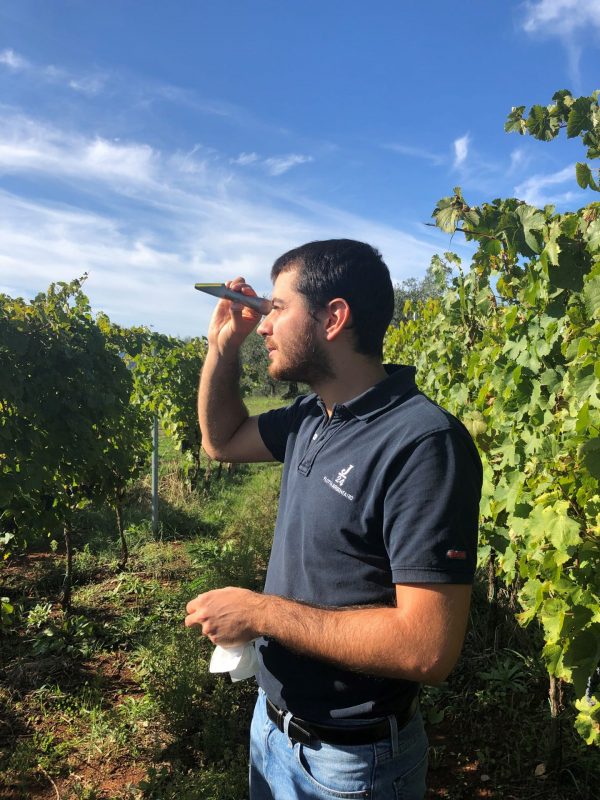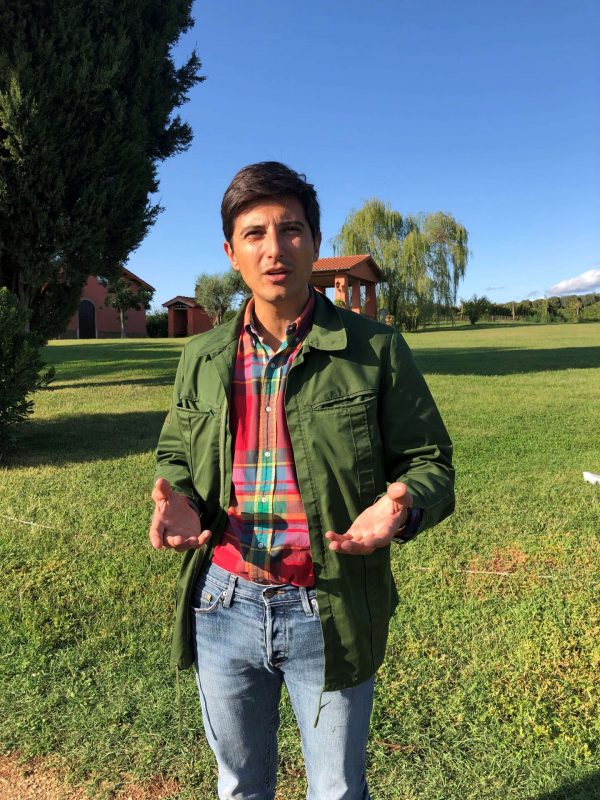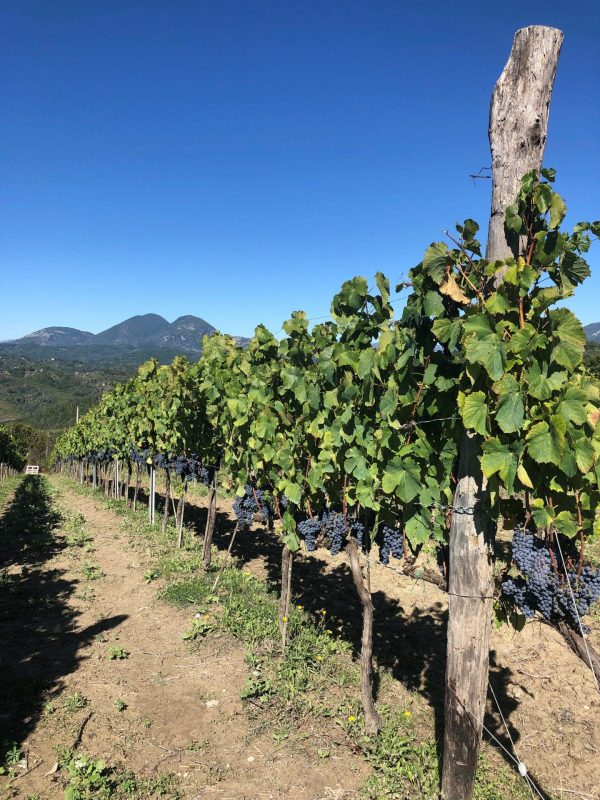“People don’t know where Lazio is,” laments Paolo Carpineti.
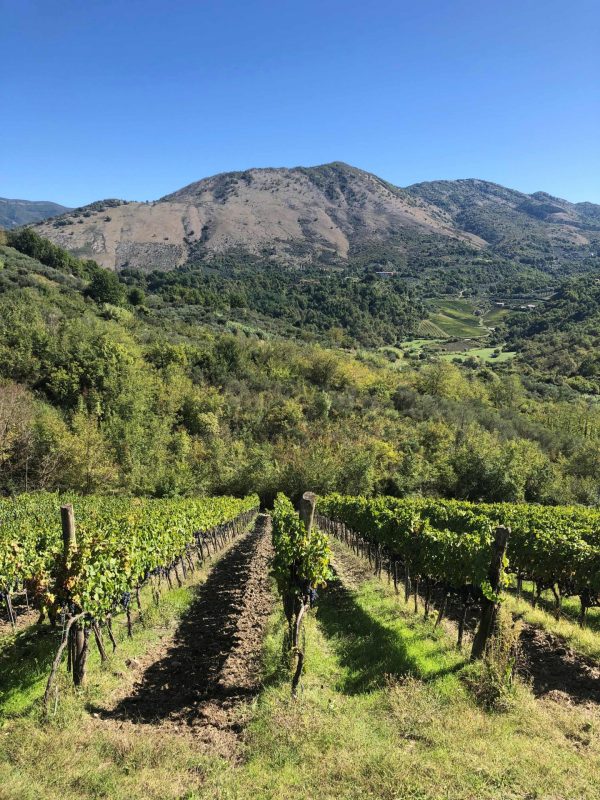
Indeed, few of the millions of tourists who breeze into Rome likely realize that they are in the region of Lazio. Nor do they go there for the wine. I am guilty of this myself and admit that it took several visits to Rome before I stayed to explore Lazio’s vineyards.
I remember my first trip to Rome – for several reasons. After dragging around an overweight rolling suitcase with broken wheels in the heat of summer, I was pacified by dinner in a neighbourhood osteria that I had spied from my hotel. The deliciously homey food was perfect with the equally rustic, brassy-hued white served by the carafe. When I asked about the wine, the owner simply replied, “it’s local.”
As much as I enjoyed the vino in that moment, it played to the stereotype I had about Lazio: unsophisticated wines best consumed in situ.
This isn’t a reflection of the region itself. Lazio boasts sunshine aplenty, appropriately hilly terrain, volcanic soils and a roster of unique grapes. Rather, it speaks to the prevailing ‘quantity over quality’ philosophy of the last century. To slake the thirst of the masses, much of Lazio turned its back on its own native varieties in favour of more reliable and productive ones. The region was – and still is – awash with homogenous, high yielding whites from the dress circle of towns to the south of Rome. “We made mistakes. It was too easy to sell to Rome,” declares Francesco de Sanctis. He is the winemaker at his family’s estate in Frascati, a once admired denomination that has fallen from grace.
“The rise of Malvasia Bianca di Candia and Trebbiano Toscano in the ‘70s was the demise of the zone,” says oenologist Lorenzo Costantini at the nearby Villa Simone. Nevertheless, he maintains that since changes to denomination regulations last decade capped Trebbiano Toscano to 30% of the blend, plantings have been curbed. Costantini leaves it out of his Frascati Superiore altogether. Instead, he blends the dependable Malvasia Bianca di Candia and the higher quality Lazio native Malvasia del Lazio (aka Malvasia Puntinata) with the characterful Grechetto grape.
De Sanctis’ dueling Frascati Superiore demonstrates a clear distinction between the two Malvasias. Made with 55-year-old pergola plantings of Malvasia Bianca di Candia, the estate’s ‘496 Bio’ label is a fresh aperitivo-style white with lovely citrus and almond. But the ‘Abelos,’ which sees 80% Malvasia del Lazio and 20% of zesty Bombino Bianco, is a fleshy, creamy mouthful nuanced by sage and bergamot. It has the stuffing to stand up to local fare like Cacio e Pepe or Bucatini all’Amatriciana and can even be tucked away for a couple of years.
Rising above a tarnished reputation is an uphill battle, but Lazio has far more to offer than its most infamous wine. Quality-minded producers are aiming to make a name for the region by championing its most capable native grapes, particularly Cesanese and Bellone – red and white respectively.
The Casale del Giglio estate is in the Agro Pontino Valley. Just 10 kms from the sea, the area was recovered from marshland in the ‘30s. When Dino Santarelli purchased the property in 1968, he originally cultivated it for bulk wine. In 1985, Antonio joined his father and the two launched a research project, planting and eventually micro-vinifying 57 different varieties. Initial success was with international grapes like Syrah, Petit Verdot and Sauvignon Blanc. However, Antonio is determined to achieve the same for native Lazio grapes.
“Cesanese wasn’t successful in the 1985 experiments as the area is too hot and flat,” Santarelli explains. He sought out growers inland at loftier altitudes who he continues to work with today. He has shared findings of his research and many of those growers now bottle their own wines as well – rather than simply filling the jugs of Rome’s trattorias.
To quote Nicolas Belfrage from his Brunello to Zibibbo book, Cesanese has been “produced since time immemorial” in the hills east of Rome. Attention: in typical Italian fashion, there are actually two officially registered, distinct Cesanese grapes – Cesanese Comune and Cesanese d’Affile. The former is more widely diffused in Lazio and found in the DOC of Cesanese di Olevano Romano.
To the east and upwards from there, the sub-alpine DOC of Cesanese d’Affile takes its name from the main town – Affile – as well as the grape. “Cesanese d’Affile produces very little,” says Walter Formiconi at one of just three estates in the zone. “It also has lots of tannins because the berries are smaller than (Cesanese) Comune.” Walter describes the area as once covered in vines. Today the denomination counts a mere eight hectares.
The Cesanese d’Affile grape is also associated with the DOCG of Cesanese del Piglio in the red volcanic hills south of Affile. As with the latter, viticulture was largely abandoned in the ‘70s. Paolo Perinelli at the excellent Casale della Ioria estate was among the pioneers of its renaissance. When the 2001 vintage of the estate’s barrique-aged Torre del Piano bottling garnered high praise at Vinitaly’s wine competition, the denomination received a new lease on life. “Now there are 29 estates,” says Paolo proudly.
Among these, Antonello Coletti Conti describes the area of Piglio as extremely varied – in soil, altitude and exposition. “Cesanese is very sensitive to this, so it is difficult to characterize.” Unquestionable though is the challenge of ripening Cesanese to perfection. Picked too early, the skins can be very bitter. “The problem with Cesanese is that it reaches phenolic ripeness late when sugar is high. It is an ugly beast,” says Antonello affectionately.
Managing Cesanese’s potentially heady alcohol is as crucial as careful extraction, but the labour of love pays off in the glass. Cesanese is one of Italy’s fruitier reds – like a cheerful bowl of sumptuous cherries with spice and floral accents to boot. It has the gusto of Rome’s cuisine. While Cesanese may not have the ageability of Nebbiolo or Sangiovese, it certainly owns a unique spot in the matrix of Italy’s multitude of grapes. My preference is for those in which the fruit, rather than the oak, is at the fore.
Scarcer than Cesanese, Bellone is a casualty of replanting to high yielding, neutral grapes like Trebbiano Toscano in the expansive Castelli Romani hills south of Rome where it was once profuse. Today its heartland is Cori, which is further south and far enough away from Rome’s insatiable restaurants. Here, Bellone thrives in volcanic soil, bathing in the intense light reflected off the sea in the distance and cooling off at night thanks to winds from the mountains.
Translated as ‘big beauties,’ Bellone yields large bunches of buxom grapes. The resulting wine is succulent and mouth filling, offering pulpy peach and tropical fruit with a refreshing lemony lift.
At his eponymous estate, Marco Carpineti has hung his hat on Bellone. After years selling to the local Cincinnato cooperative, which he eventually became the president of, he started making wine under his own label in 1996. His Collesanti bottling is a benchmark.
“Bellone has a great diversity,” says Marco’s son Paolo. While most examples are dry and still, Bellone’s intrinsic acidity persuaded Carpineti to produce a traditional method sparkler called Kius.
“Bellone is also risky as it can change on a dime,” Paolo continues. “The pulp is firm, but the skin is delicate.” While it is susceptible to botrytis, Bellone’s sweet wines tend to be made with late harvested, raisined grapes like Carpineti’s Ludum.
Likewise, the Cincinnato co-op celebrates the versatility of Bellone making eight different versions – from tank method bubbles to grappa. Cincinnato is also the leading light when it comes to the even rarer local Nero Buono grape. The deeply coloured, juicy red makes a flavourful, savoury wine with a pleasantly bitter herbal twist. The significance of a high-quality cooperative like Cincinnato with a tight focus on Lazio’s native grapes cannot be overstated. It contributes to economic stability for all 130 of its grower members while preserving the region’s genetic heritage and diversity.
Once you open Lazio’s treasure chest of native varieties, the rewards keep coming. And if the region aspires to make itself known on the wine map, it is to these strengths that it must play.
Casale del Giglio Bellone IGT Lazio 2021 $22
Not included in the estate’s original experimental plantings in 1985, Casale del Giglio’s Bellone hails from sandy soil giving a particularly perfumed expression. Fragrant white blossom and Mediterranean herb lace through apricot and pineapple. Fleshy fruit weighs plumply on the palate and is buoyed with super snappy acidity. Tactile and engaging, it lingers with dried mango.
Sergio Mottura Poggio della Costa Grechetto di Civitella d’Agliano IGT 2018 $30
In the far northern corner of Lazio, Sergio Mottura has nurtured the Grechetto grape for almost 60 years. Bursting with personality, the unoaked Poggio della Costa sings of sage, mint and camomile on a backdrop of salted pineapple. While made for drinking young, it can stand up to a few years in the bottle taking on candied lemon and hints of blanched almond.
Casale del Giglio Cesanese IGT Lazio Rosso $25
Gorgeously scented – cinnamon, pepper and rose emerge confidently with each swirl. Replete with red cherry, plum and succulent tropical red fruit, the lush and creamy palate is caressed by velvety textured tannins. This gets quite a lift from its cranberry-like acidity.
Formiconi Cisinianum Cesanese d’Afile DOC 2018 $25
Aged in stainless steel rather than wood, Cisinianum sports a piercing nose of black cherry and clove. With an earthy, foresty character, this fleshy, juicy mouthful is simply begging for a bowl of fresh porcini pasta.
Casale della Ioria Cesanese del Piglio Superiore DOCG 2019 $35
Spiced wild berries make way for heady, pure floral notes of violet and crushed allspice. Expanding sumptuously, dense rich fruit is hemmed in by smooth tannins. There is a background nuance of nutmeg and a definitive black pepper twist on the finish.
Cincinnato Erole Nero Buono IGT Lazio 2019 $25
Distinct and compelling, aromas express balsamic herbs, pine forest and leather. On the palate, tangy blackcurrants and rhubarb are gripped in grainy tannins. Ends with a salty lick of licorice. So savoury and sapid, this makes you salivate for an irony steak.
Michaela Morris is an international wine writer, educator and speaker based in Vancouver, Canada. She has worked in various capacities of the industry for 25 years. Besides holding the Wine & Spirit Education Trust Diploma, Michaela is an Italian Wine Expert certified through Vinitaly International Academy (VIA) and leads seminars on Italian wine around the globe. Not surprisingly, her go-to cocktail is a negroni.

